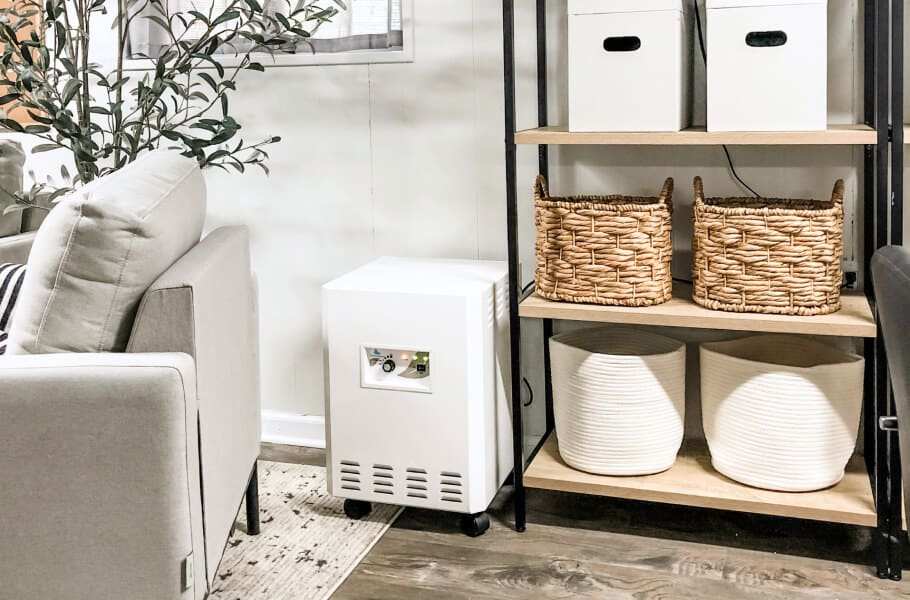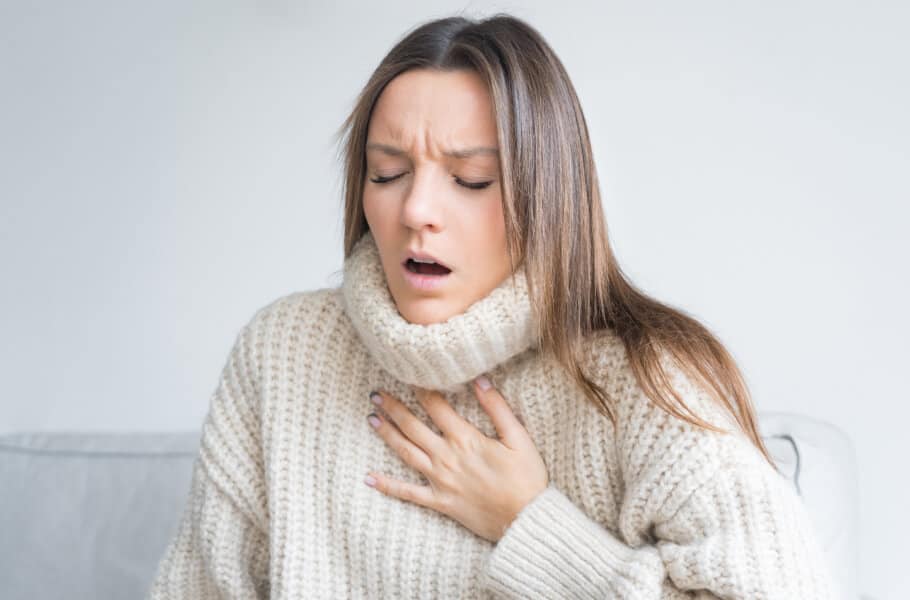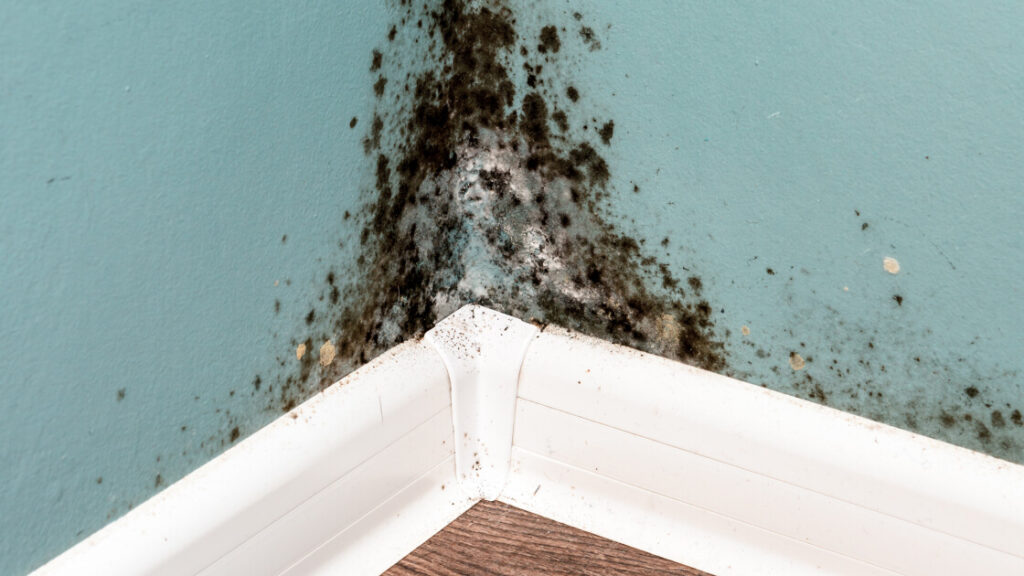Mold growth is a common issue in many households, with research suggesting that about 5% of people might experience some form of mold-related allergies during their lifetime.
As people grapple with mold issues at home, many are leaning toward handy solutions like air purifiers, recognizing their knack for creating healthier indoor spaces.

This article explores the effectiveness of an air purifier for mold prevention and provides some tips on staying mold-safe.
What Causes Mold in a House?
Mold can thrive in various environments, and several factors contribute to its growth, including:
- Moisture. Mold requires moisture to grow, so sources of excess moisture contribute to its development.
- Poor ventilation. Inadequate airflow traps moisture, creating the perfect conditions for mold growth.
- Leaks. Water leaks from pipes, appliances, or roofs introduce moisture into the environment, promoting mold growth.
- Flooding. Water damage from flooding can lead to mold growth if not properly addressed.
- Humidity. Regions or indoor spaces with high humidity create an ideal environment for mold to thrive.
- Carpets. Materials that retain moisture, such as carpets and upholstery, can become breeding grounds for mold if they stay damp.
Mold finds favorable conditions to thrive in specific environments and surfaces, such as near windows, drywall, pipes, insulation, and paint.
Types of Indoor Mold
Generally, mold species come in three main types:
- Allergenic. This mold is not likely to cause illness, but it might bug your allergies a bit. Some allergenic mold examples include Alternaria, Aspergillus, Cladosporium, and Penicillium.
- Pathogenic. If your immune system isn’t at its best, this mold could cause an infection. Molds such as Mucor, Acremonium, and some Aspergillus and Penicillium species are pathogenic.
- Toxigenic. This type is toxic to everyone, including animals, so it is best to steer clear. The notorious black mold (Stachybotrys) is a common example.
While molds like Fusarium, Trichoderma, and Chaetomium often affect plants and soil, they can also grow indoors and cause health problems.
Mold Health Effects: Risks and Symptoms
Now that we’ve covered the various types of indoor mold, let’s shift our focus to understanding the potential health risks and symptoms associated with mold exposure.

Mold health effects can vary from person to person and may lead to brain issues in some people. Those with allergies, asthma, or compromised immune systems may be more susceptible to the health impacts of mold exposure.
That said, here are the common allergies and risks associated with mold exposure.
- Coughing. Inhaling airborne mold spores can irritate the respiratory system, leading to persistent coughing.
- Wheezing. Individuals sensitive to mold may experience wheezing ― a whistling sound produced during breathing ― particularly in those with asthma or respiratory conditions.
- A stuffy or runny nose. Mold exposure can trigger nasal congestion, causing a stuffy or runny nose.
- Sneezing. Mold particles and spores in the air may prompt sneezing as the body’s natural response to foreign particles.
- Watery, red, or itchy eyes. Mold allergies can affect the eyes, leading to mold allergy symptoms like watery eyes, redness, or itching.
- A sore throat. Inhaling mold spores may irritate the throat, resulting in a scratchy throat.
- Skin irritation or rashes. Direct contact with mold can cause skin irritation, especially in individuals with sensitive skin.
- Sinusitis. Prolonged mold exposure can contribute to sinusitis, which may lead to headaches and difficulty breathing.
Signs You Have Mold in Your House
Spotting mold in your house is key for keeping things fresh and healthy indoors. Here are some common signs you have mold and airborne contaminants in your house:
- Musty odor. A persistent earthy smell in specific areas of your home can indicate mold growth.
- Visible mold. Keep an eye out for visible mold growth on walls, ceilings, or other surfaces. It can appear in various colors, including green, black, or brown.
- Water stains. Stains on walls or ceilings, often resulting from leaks or water damage, may signal an environment conducive to mold growth.
- Allergic reactions. If you or your family members experience unexplained allergic symptoms, such as coughing, rashes, chest tightness, or chronic fatigue syndrome, mold could be a contributing factor.
- Peeling paint. Mold can hide beneath or behind peeling paint or wallpaper, so keep your eyes on these spots, and remember, mold takes a while to grow.
What Is the Difference Between Mold and Mildew?
While mold and mildew are commonly used in the same breath, they differ. Here’s what sets them apart:
- Appearance. Mold usually has a slimy appearance, often in colors like green, black, or blue. Mildew is generally a powdery, flat growth that comes in white or gray shades.
- Structural damage. Mold can penetrate deep into the material it’s growing on, causing extensive structural damage. On the flip side, mildew usually stays on the surface and doesn’t cause as much structural harm as mold.
- Health effects. Mold exposure can lead to various health issues, ranging from mild to severe. Conversely, respiratory irritation from mildew is generally less harmful than mold.
If you’re dealing with both, read our guide for mold and mildew odor removal tips.
Do Air Purifiers Help With Mold?
Can an air purifier help with mold? Yes, air purifiers for mold come with filters designed to trap tiny particles, including mold spores, circulating in the air. By capturing these spores, air purifiers prevent them from settling on surfaces and reduce the risk of mold exposure.
If left unchecked, mold spores can settle and multiply. Air purifiers capture these spores before they can reproduce, preventing them from spreading throughout your home.
Remember, removing mold yourself can be risky and may release more spores into the air, worsening the problem. Using an air purifier is a safer and more effective approach.
Best Air Purifier for Mold: Features to Look for
Choosing the right air purifiers for mold means finding options with these must-have features:
- HEPA Filtration. HEPA filters are super effective at trapping tiny mold spores, ensuring they don’t linger in the air.
- UVC Lights. These lights deactivate mold spores, preventing them from growing and causing trouble.
- Mold-Generated VOC Removal. This feature tackles mold and the odor it produces, leaving your space fresh and mold-free.
EnviroKlenz stands out as a leader in safeguarding your home from mold and improving indoor air quality with its top-notch air purification system.
With a cutting-edge blend of purification features including HEPA filtration, UVC lights, and effective VOC removal through its metal-oxide neutralization technology, EnviroKlenz ensures a powerful defense against mold and its associated VOCs and odors by reducing spores in your airspace and ensuring proper turnover of your air, providing you with a clean, healthy, and mold-free indoor space.
Conclusion
Creating a mold-free home starts with understanding the signs, health risks, and the crucial role of air purifiers. To safeguard your home with the best air purifier for mold, opt for a standout performer like EnviroKlenz to treat your airspace.








